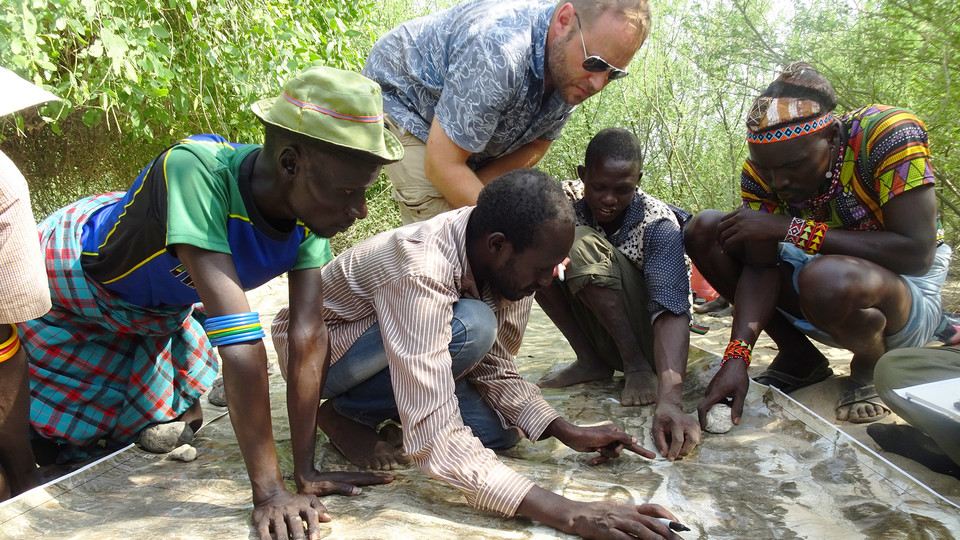
For more than 5,000 years, the eastern shores of Lake Turkana in northern Kenya have been home to pastoralists — living and moving in tandem with the rainfall and the land to allow their livestock to forage and thrive.
The Daasanach, one of the modern ethnic groups inhabiting East Turkana, maintain these practices to this day.
But rapid globalization and climate change — especially in the last 40 years — have produced uncertainty regarding food, water and habitat resources for the Daasanach, and have altered their way of life. The changes the Daasanach have experienced are not happening in a vacuum, however; they are similar to challenges faced by grazing communities around the world.
University of Nebraska–Lincoln researcher Matthew Douglass is leading an international, multi-disciplinary team studying the current socio-ecological system of the Daasanach population. The research will provide data to local and international policymakers about the current ecological and cultural challenges, and will endeavor to predict future outcomes.
“There are major things that are happening — decreases in rainfall, agricultural use of the land, the building of water wells and dams, the establishment of health care, food aid and settlements — that are impacting the overall well-being of the population in both good and bad ways,” said Douglass, assistant professor of practice in the College of Agricultural Sciences and Natural Resources. “There's this deep cultural resiliency. Pastoralism is persistent. The question is, is it going to continue? Is it sustainable given current circumstances?”
The research officially began Oct. 1 under a four-year, $748,000 grant from the National Science Foundation. The team will employ satellite images, including declassified spy images from the Cold War, ecological and archaeological data, aerial drone images, health and nutrition assessments, participant mapping and GPS tracking, computer simulations and ethnographic interviews.
Douglass became aware of the need for this research as a faculty mentor at the Koobi Fora Field School in Kenya. The field school, which has been ongoing for decades, is maintained through a partnership between National Museums of Kenya and George Washington University and is a premier field research and training program in archaeology, anthropology and paleoecology.
“Daasanach work with us at the field school and they’re with us as we’re studying the rich cultural heritage of Turkana, and they’ve said, ‘We've been here for a long time, but what's our role in this process?’” Douglass said. “We’ve started this new wrinkle in the larger field school where we’re studying the modern population and how they’ve changed. Our existing research team has some unique skill sets associated with our past work, and now with new partners who bring new expertise and interests, we are expanding the impact and interdisciplinarity of the field school and what it offers both in terms of research and student training.”
Team members at Nebraska are Douglass; Larkin Powell, professor of conservation biology and animal ecology; and Yi Qi, assistant professor in the School of Natural Resources. Faculty from George Washington University, Penn State University and Duke University, and the National Museums of Kenya, among others, are also participating.
There are also student opportunities with the project. Applications for the field school will open Nov. 1, and a limited number of fellowships are available through the NSF Research Experience for Undergraduates program. The applications will be administered by the office of international programs at George Washington University. Links to the application are available here.
Powell said the research will not only inform policymakers and populations across the many countries in Africa, but can be transformed into curriculum for science teachers in elementary, middle and high schools. The Nebraska team members will work with extension educators to develop this curriculum.
“Ranches in the United States face similar dilemmas with regard to land use and water use,” Powell said. “So, we have proposed the creation of a board game that will allow students to tackle roles and make decisions.
“By playing a game with challenges and various stakeholders, students will be able to demonstrate how the land system and social system may be sensitive to specific criteria — and how certain decisions and changes in a land use system may be tipping points that should be avoided.”
Deann Gayman, Nebraska Today